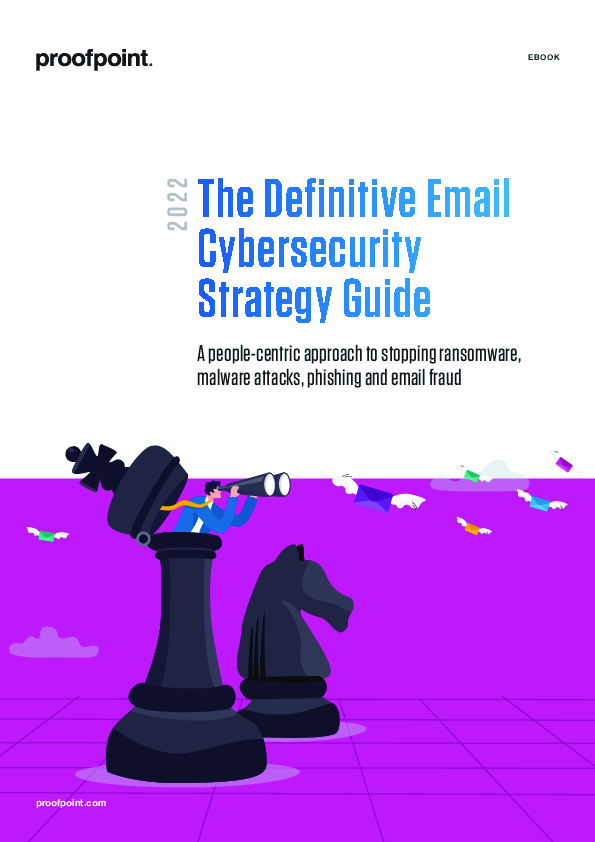

客戶: Proofpoint Ltd
格式: Guide
尺寸: 1.23 MB
語言: 英語
日期: 13.05.2024
The Definitive Email Cybersecurity Strategy Guide
Every day around the world, a silent battle wages on in one of the most familiar and central features of modern work: the email inbox.
As the top malware delivery vector and fertile ground for all kinds of fraud, email is the channel where cyber attackers are most likely to compromise their targets. They trick users into clicking on an unsafe link, giving away their credentials, or even carrying out commands directly (such as wiring money or sending sensitive files).
It’s not hard to see why attackers prefer email. It uses a decades-old architecture that wasn’t designed with security in mind. It’s universal. And unlike computer hardware and infrastructure, email attacks exploit vulnerabilities that can’t be patched: people.
The challenge is growing even more complicated amid a shift to the cloud and remote work.
Organisations spend billions every year on security tools designed to harden the network perimeter, detect network intrusions and secure endpoints. And yet the volume and costs of ransomware, business email compromise (BEC), credential phishing and malware-fueled data breaches have never been higher.
That’s because today’s attacks hack human nature, not just technology. And email is the easiest way to reach people.
As the top malware delivery vector and fertile ground for all kinds of fraud, email is the channel where cyber attackers are most likely to compromise their targets. They trick users into clicking on an unsafe link, giving away their credentials, or even carrying out commands directly (such as wiring money or sending sensitive files).
It’s not hard to see why attackers prefer email. It uses a decades-old architecture that wasn’t designed with security in mind. It’s universal. And unlike computer hardware and infrastructure, email attacks exploit vulnerabilities that can’t be patched: people.
The challenge is growing even more complicated amid a shift to the cloud and remote work.
Organisations spend billions every year on security tools designed to harden the network perimeter, detect network intrusions and secure endpoints. And yet the volume and costs of ransomware, business email compromise (BEC), credential phishing and malware-fueled data breaches have never been higher.
That’s because today’s attacks hack human nature, not just technology. And email is the easiest way to reach people.




